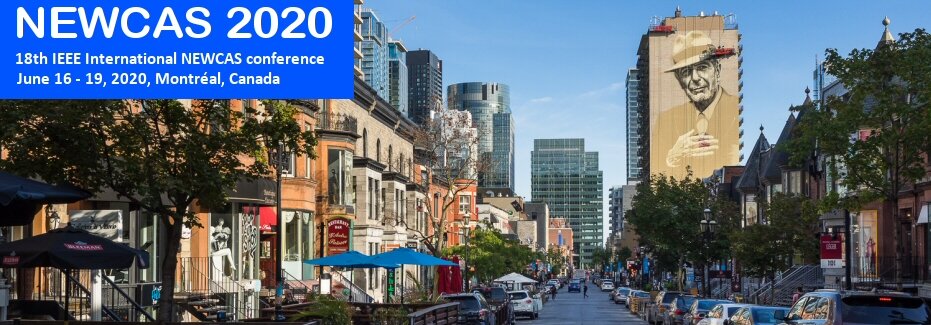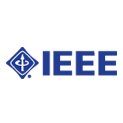Numerical revolution and its impact on fiber optical communication
by Naim Ben-Hamida, Ciena Corp., Canada
Flexible Electronic Skin with Distributed Sensors and Computing
by Ravinder Dahiya, James Watt School of Engineering, University of Glasgow, UK
Audio Intelligence at the Edge
by Vincent Huard, Dolphin Design, France
Numerical revolution and its impact on fiber optical communication
Follow this link for the video presentation
 Naim Ben-Hamida
Naim Ben-Hamida
Ciena Corporation, Canada
Wednesday, june 17
8:30 am – 8:50 am
— Abstract — Networking traffic is increasing exponentially, driven by high-definition video streaming, 5G wireless, and cloud computing. DSP-based coherent optical modems are necessary to fully exploit the capacity of fiber channels. Transport capacity can be improved through increases in bit rate, spectral efficiency, and the application of multi-carrier bundles. Physical impairments due to noise, nonlinearity, optical filtering, chromatic dispersion, and polarization mode dispersion are barriers to achieving reach with high capacity signals. Coherent detection provides linear access to the amplitude and phase of the optical electric field and so allows linear digital filtering to directly compensate those linear impairments. Conversion from digital to analog domain enables coherent optical transceiver. DACs at the transmitter allows DSP for equalization and the capability of a wealth of software definable modulation formats from a single transceiver. At the receiving end the complex electrical field is converted to electrical domain in a coherent receiver module. Photonic integration allows optical hybrid, detectors, and transimpedance amplifiers to be co-packaged in a single module. Silicon photonics coherent receivers are being developed which enable even more compact designs. Analog-to-digital converters (ADCs) will then convert the analog electrical signals to the digital domain for processing in the receiver DSP. Important parameters for high-speed DAC and ADC designs are: bit resolution, sample rate, signal-to-noise-plus-distortion ratio (SNDR), clock speed, jitter, and power dissipation. In this presentation we will highlight the importance and the requirements of high-speed data converter DSP and FEC in enabling coherent optical modems. An overview of the 100G/200G/400G/800G optical modem will be also provided. Finally, we conclude with the requirements of Tera bit optical modem from baud rate, sampling rate, resolution, and modulation formats.
— Biography — Dr Naim Ben-Hamida is director of Hardware Engineering at Ciena Corporation. His inventions, with his team, at Ciena enabled the digital revolution by addressing the ever increasing internet traffic. Networking traffic is increasing exponentially, driven by high-definition video streaming, 5G wireless, internet of things (IoT), cloud computing, and artificial intelligence AI. The DSP-based coherent optical technology, developed by Dr Ben-Hamida’s team, is the key enabler of this digital revolution. Since its introduction in 2006, it increased the capacity of a single fiber by more than hundred times. Dr. Naim Ben-Hamida is responsible for the development of high-speed analog IP (Intellectual Property) for optical communication. His current project is an 800Gb/s coherent optical modem. High speed circuits designed by Dr Ben-Hamida’s team carry most of the internet content of the world. Ciena’s customers are leading telecommunication companies and internet content providers (Facebook, Google, Microsoft, …). He is currently co-supervising more than 15 PhD and MSA students covering seven research and development projects with six Canadian universities. These projects are centered around 1Tb/s optical modem using Silicon Photonic, high speed electronic and high-performance DSP in 7nm CMOS technology, brain machine interface, artificial intelligence and internet security and digital sovereignty. He also holds an adjunct professor position with Carleton University. Naim Ben-Hamida has published more than 100 international papers and holds more than forty patents. Prior to Ciena/Nortel, He co-founded Opmaxx Inc, a mixed signal design and test company. He held a vice president position and was part of the team who led the company to an acquisition. Dr Ben-Hamida had a PHD and MSA from Ecole Polytechnique de Montreal, and Bachelor of Science in electrical engineering from Laval university Quebec, Canada
Flexible Electronic Skin with Distributed Sensors and Computing
Follow this link for the video presentation
 Ravinder Dahiya
Ravinder Dahiya
University of Glasgow, UK
Thursday June 18
8:30 am – 8:50 am
— Abstract — The miniaturization led advances in microelectronics over 50 years have revolutionized our lives through fast computing and communication. Recent advances in the field are propelled by applications such as electronic skin in robotics, wearable systems, and healthcare technologies etc. Often these applications require electronics to be soft and squishy so that it can conform to 3D surfaces. These requirements call for new methods to realize distributed sensors, actuators, electronic devices and computational circuits (e.g. neural like computing) on unconventional substrates such as plastics, papers and elastomers. This lecture will present various technological approaches that are being explored in this direction, especially in context with computational tactile or electronic skin (eSkin). These approaches included distributed off-the-shelf electronics integrated on flexible printed circuit boards, to novel alternatives such as eSkin constituents obtained by printed nanowires and graphene-based devices, and ultra-thin chips, etc. The technology behind such sensitive flexible electronic systems is also the key enabler for numerous emerging fields such as internet of things, smart cities and mobile health etc. This lecture will also discuss how the flexible electronics research may unfold in the future.
— Biography — Ravinder Dahiya is Professor of Electronics and Nanoengineering at University of Glasgow. He is the Director of Electronics Systems Design Centre (ESDC). His group (Bendable Electronics and Sensing Technologies (BEST)) conducts fundamental research on high-mobility materials based flexible electronics leading to electronic skin, and their application in robotics and wearable systems. Prof. Dahiya has published more than 300 research articles, 4 books, and 15 patents submitted/granted. He has given more than 140 keynote/invited talks. He has led many international projects (~ £30M) funded by European Commission, EPSRC, The Royal Society, The Royal Academy of Engineering, and The Scottish Funding Council. Prof. Dahiya is Fellow of IEEE, and the President-Elect (2020-21) and Distinguished Lecturer of IEEE Sensors Council. He is serving on the editorial boards of several leading journals. He holds EPSRC Fellowship and received in past the Marie Curie Fellowship and Japanese Monbusho Fellowship. He also received the 2016 IEEE Sensor Council Technical Achievement Award and the 2016 Microelectronic Engineering Young Investigator Award (Elsevier).
Audio Intelligence at the Edge
Follow this link for the video presentation
 Vincent Huard
Vincent Huard
Dolphin Design
Friday, june 19
8:30 am – 8:50 am
— Abstract — The advent of artificial intelligence is driven nowadays by the omnipresent usage of connectivity and cloud ressources. Nevertheless, the increasing number of connected objects at the very edge of the network will change its paradigm. Both the data privacy and the reliability of the network will require that part of the processing must be supported directly at the edge. This keynote will address the challenges related to the usage of AI in the specific cases of Audio Intelligence. Most of the challenges require an in-depth know-how of Audio Codecs and related filtering chain. The other side of the challenges is related to the capability to embed high processing performances in a constrained power budget. These two domains are part of the core expertise of Dolphin Design and are now expanded to address the new challenges related to AI.
— Biography — Vincent Huard received the B.S. (1996) in physics and the M.S. (1997) in electrical engineering from INPG. He received his Ph.D. (2000) in physics from Grenoble university. In 2000, he was Visiting Scholar at UCSB. In 2002, he joined Philips Semiconductors. From 2007 to 2018, he was at STMicroelectronics as Design to Product Reliability manager and a Distinguished Member of Technical Staff. He is now the Chief Technology Office at Dolphin Design and in charge of Audio & Processing Product Line. His research interests cover design for reliability and for test, reliability modeling, and new solutions for energy efficiency trade-off for High Reliability and ULV/ULP products especially for Edge AI/ML solutions. He authored 180+ papers, several invited papers, tutorials and keynotes, held 20+ patents and is serving as IRPS Management Committee member and various conferences Technical committee member. He is the recipient of the IRPS 2017 Best Paper award, the IRPS 2012, 2013, 2016 and 2017 Outstanding Paper awards, the DATE 2015 Best Paper award and the ITC-india 2017 Best Paper award.



